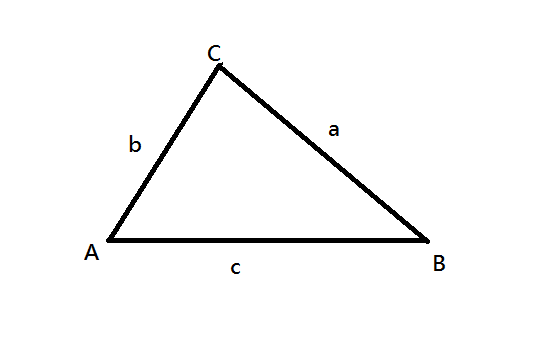Posted the problem backwards
△
A
B
C
has sides
a
,
b
,
c
such that
a
+
c
1
+
b
+
c
1
=
a
+
b
+
c
3
. Find
∠
C

Clarification: a is the side opposite to vertex A , b is the side opposite to vertex B and c is the side opposite to vertex C as shown in the image above.
This section requires Javascript.
You are seeing this because something didn't load right. We suggest you, (a) try
refreshing the page, (b) enabling javascript if it is disabled on your browser and,
finally, (c)
loading the
non-javascript version of this page
. We're sorry about the hassle.
1 solution
There's a much easier way to manipulate the given expression rather than directly multiplying it out:
a + c 1 + b + c 1 ( a + b + c ) ( a + c 1 + b + c 1 ) a + c ( a + c ) + b + b + c ( b + c ) + a 1 + a + c b + 1 + b + c a a + c b + b + c a b ( b + c ) + a ( a + c ) b 2 + b c + a 2 + a c c 2 = a + b + c 3 = 3 = 3 = 3 = 1 = ( a + c ) ( b + c ) = a b + a c + b c + c 2 = a 2 + b 2 − a b .
Then, we can apply Law of Cosines as you did in your solution.
Nice one! That was what I was looking for
a + c 1 + b + c 1 = a + b + c 3 ⇒
( a + c ) ( b + c ) a + b + 2 c = a + b + c 3
After some tedious algebra, we conclude that :
a 2 + b 2 = a b + c 2 ⇒
c 2 − a 2 − b 2 = − a b
From the cosine law we have:
c 2 = a 2 + b 2 − 2 a b cos C ⇒
c 2 − a 2 − b 2 = − 2 a b cos C ⇒
− a b = − 2 a b cos C ⇒
cos C = 2 1 ⇒
C = 6 0
Note: The trig-equation cos C = 2 1 has infinite roots but since 0 < C < 1 8 0 the only root is 60.